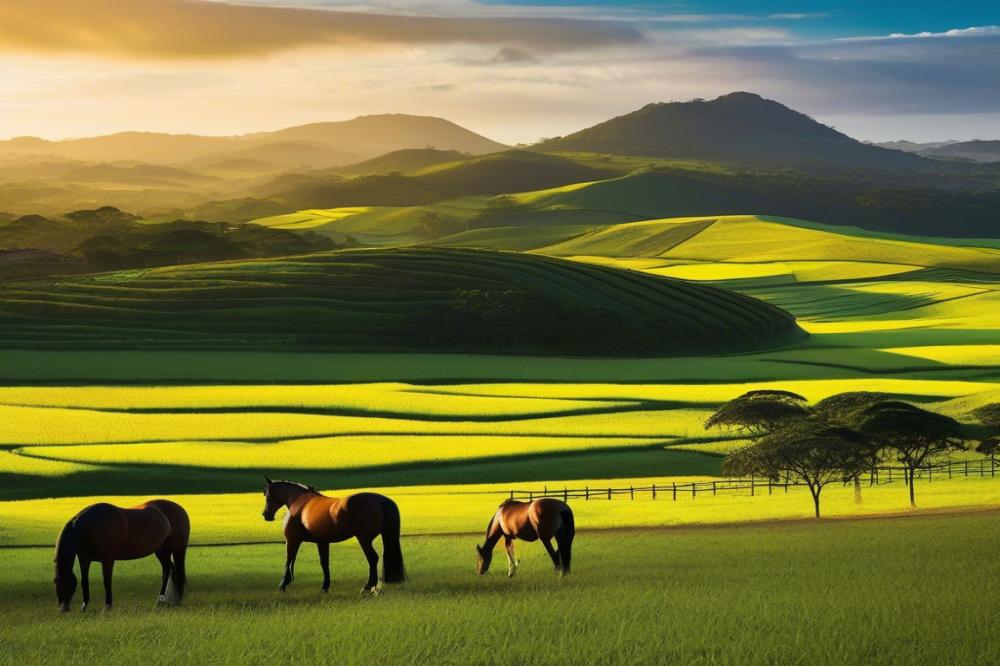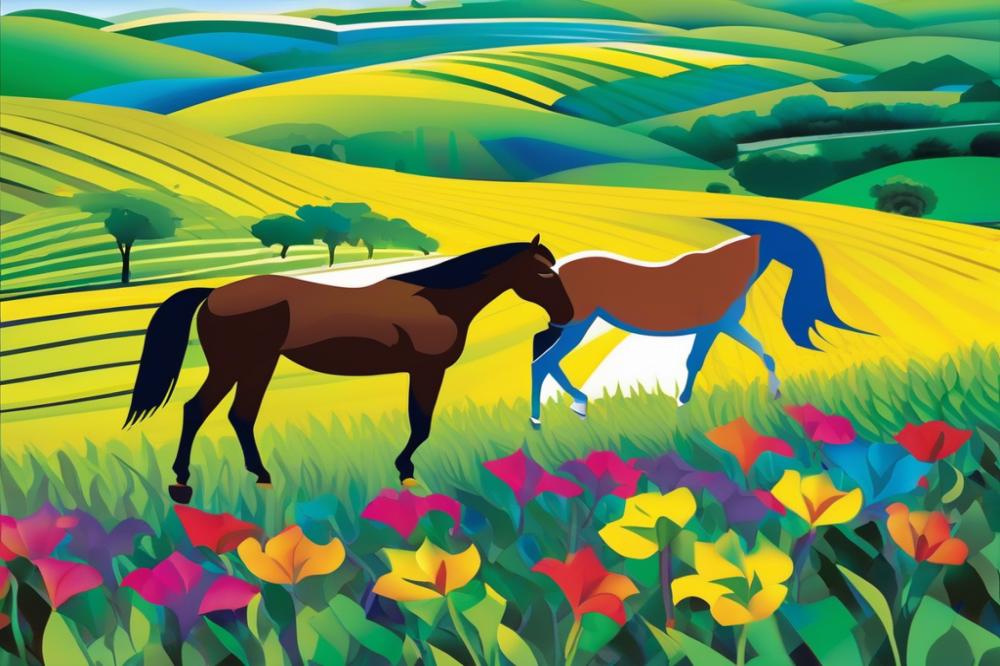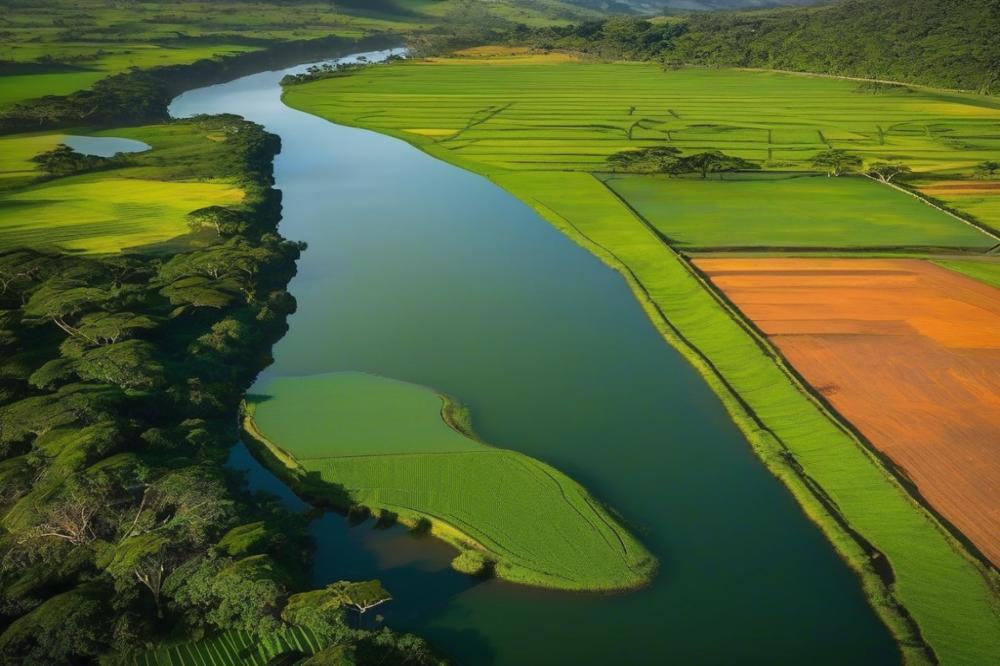Overview of Horse Population in Brazil
Brazil is home to approximately 5.3 million horses, making it one of the largest horse populations in the world. These animals are not just companions or leisure creatures; they play a vital role in the nation’s agricultural sectors. In rural areas, horses are often essential for transportation, farming, and herding livestock. Many families depend on these equines for their daily work and livelihood.
Importance of Brazilian horses in agriculture and agriculture-and-daily-life”>rural development

In the heart of Brazilian farming, the contributions of horses are undeniable. They assist in plowing fields and transporting goods to markets. Every day, farmers rely on their strength and steady nature. This reliance helps sustain communities and supports local economies. When crops need to be tended, farmers often turn to their horses. This relationship goes beyond mere utility; it fosters a bond built on trust.
Connection to the equine industry and Cultural Significance

Horses are more than just animals in Brazil; they carry deep cultural significance. Traditional events, such as rodeos and festivals, celebrate these magnificent creatures. The equine industry is a crucial part of rural life. It creates jobs and supports local artisans who craft saddles, bridles, and other horse gear. Many families take pride in their horses, often treating them as part of the family. This connection to the land and culture enriches the lives of those who live in rural areas.
The presence of horses in Brazil is both a practical asset and a cultural treasure. As the nation continues to develop, the importance of these animals will likely grow even more. Understanding their impact can help shape future policies and efforts aimed at rural development.
The Scale of Brazil’s Horse Population
With an estimated 5.3 million horses, Brazil boasts one of the largest equine populations globally. This considerable number plays a significant role in the nation’s cultural and economic fabric. Horses are not just animals in rural areas; they represent livelihood, history, and tradition. The link between horses and rural communities forms a vital part of Brazil’s identity.
Statistics on the 5.3 million horses in Brazil
The horse population in Brazil is diverse. This figure includes various breeds, ranging from working animals to show horses. Many of these animals contribute to agriculture, transportation, and leisure activities. It is noteworthy that horse ownership influences many families in the countryside. Quite a few rely on them for day-to-day functions, such as herding cattle and transporting goods.
Regions with the highest concentration of horses
The southeastern and southern regions of Brazil show the highest concentrations of equines. States like Minas Gerais, São Paulo, and Rio Grande do Sul are particularly significant. Here, horses are embedded in rural life. These areas are known for their rich pasture lands, making them ideal for equine breeding. Communities in these states often have strong traditions related to horses, including festivals and competitions. This widespread presence promotes both social bonding and economic activities.
Comparison with other top horse population countries
Brazil ranks among the leaders in horse populations when compared to other countries. The United States and China are notable competitors, each having millions of horses themselves. However, the exact figures vary for each nation. In terms of cultural significance, Brazil’s horses hold a unique place in the heart of its people. This connection differs from places where horses are primarily seen as sports or leisure animals. Brazil emphasizes their role in everyday life, shaping both the economy and community spirit.
Brazilian horses and Agriculture
In Brazil, horses play a vital role in agriculture. Their strength and agility help farmers manage their land and livestock. Many rural communities rely on these animals for daily tasks. Work horses are indispensable for plowing fields, transporting goods, and assisting with herding cattle. A well-trained horse can save time and energy, allowing farmers to focus on other essential tasks.
Horse farming practices vary widely across the country. Breeders often select specific breeds for their unique traits. Some are favored for their endurance, while others excel in speed or strength. This diversity helps meet the needs of different agricultural activities. Local traditions influence how horses are raised and used. In certain regions, horsemanship skills are passed down through generations, enhancing community ties.
Impact on Rural Communities
Horses do more than aid in agriculture; they contribute significantly to rural economies. Many small farms depend on their horses for transport and labor. Owning a horse can increase a family’s income through various agricultural activities. Those who offer rides, training, or even therapeutic programs add another layer to this economy. In many villages, horses can symbolize wealth and social standing.
Communities often come together to celebrate horse-related events. Roping contests and rodeos draw crowds and foster a sense of unity. Such gatherings not only entertain but also showcase local skills and culture. Children learn valuable lessons about responsibility and care through their work with horses. These interactions build a strong foundation for the next generation.
Integration in Livestock Management
Integrating horses in livestock management brings several advantages. They can help control cattle and guide them to pastures. This is particularly useful in vast ranches where vehicles are impractical. Horses allow for a more intimate connection with the animals under their care. Their instincts often lead to better herding outcomes, as they can anticipate livestock behavior. Farmers develop a keen understanding of their horses, enhancing teamwork.
The relationship between farmers and their horses is built on trust. Training requires patience and skill, fostering a strong bond. Well-trained horses often respond to subtle cues, making communication easy. This harmony leads to greater efficiency in farm operations. Ultimately, these animals are essential partners in the daily life of rural farmers.
The Economic Impact of the Equine Industry
The equine industry plays a significant role in Brazil’s economy. With around 5.3 million horses, this sector creates countless opportunities for growth. Farmers and ranchers often rely on these animals for various tasks. From labor to transportation, horses are vital for rural agriculture. In many areas, the horse is more than just a way to work; it represents a way of life.
Job creation is another critical aspect of this industry. Many rural communities benefit from equine-related jobs. Working with horses includes training, grooming, and caring for them. Such jobs often provide stable income. Families depend on this sector to support their livelihoods. Manure collection, hay production, and breeding also contribute to employment.
Furthermore, income generation extends beyond just farming. Equestrian events bring visitors to rural regions. These occasions create demand for local businesses. Hotels, restaurants, and shops experience a boost during competitions and festivals. Tourists eager for horseback adventures infuse cash into the local economy. The ripple effect of equestrian tourism cannot be ignored.
This tourism highlights the beauty of Brazilian landscapes. Travelers seek authentic experiences that connect them to nature. Many are drawn to learn about local culture and traditions related to horses. By engaging with the rural community, they not only enjoy the scenery but also support those who call it home. Events and tours foster a sense of community pride.
Sustainable Development and Biodiversity
Horses and their role in promoting biodiversity
Horses play an important part in the ecosystems of rural areas. They help maintain grasslands by grazing, which supports various plant species. This grazing pattern creates diverse habitats for local wildlife. Farmers often use horses for transport and labor, which reduces reliance on machines. This shift can lower carbon emissions and promote healthier landscapes. By integrating these animals into their practices, communities may also enhance their connection to nature.
Sustainable practices in horse farming
Practices in horse farming can be adjusted to be more environmentally friendly. Rotational grazing helps prevent overgrazing and promotes soil health. Local feed sources are often better for the environment and can support local farmers. Water management is also crucial in preserving resources. Using natural remedies for horse health can reduce chemical usage on farms. Farmers who focus on sustainability create not only healthier animals but also healthier communities. It is a win-win scenario for everyone involved.
Challenges and opportunities for maintaining horse populations
Maintaining horse populations comes with specific challenges. Urbanization threatens rural areas, leading to habitat loss. At the same time, economic pressures can make it hard for farmers to keep their horses. Decreased funding for equine welfare organizations also plays a role. Yet, there are opportunities to explore as well. Increasing interest in sustainable agriculture suggests that horse farming can thrive. With the right support, communities can celebrate their equine heritage while promoting the welfare of these animals. Collaboration between farmers and conservationists can spark innovative approaches to coexist with wildlife.
Cultural Significance of Horses in Brazil
Historical context of horses in Brazilian culture
Horses have long been important in Brazil. They arrived with the Portuguese in the 16th century. Initially, they helped with transportation and agriculture. Over centuries, these animals became woven into the fabric of Brazilian life. They played roles in the expansion of farms and towns. As ranching grew, so did the bond between people and horses. This deep connection is still felt today.
Festivals and traditions centered around horses
Festivals dedicated to horses reflect their cultural significance. One notable event is the Festa do Peão, celebrated in many regions. This festival showcases rodeos and showcases the skills of both horse and rider, fostering a sense of community. Local cuisine, music, and dance enhance the celebrations. Additionally, many towns hold annual cavalcades, where riders parade through the streets. These events unite families and friends, honoring the rich traditions of rural life.
Equine sports and their popularity in rural communities
Equine sports are a major part of life in Brazilian countryside. Rodeos are particularly popular, attracting large crowds. Competitors showcase their abilities in various events, such as bull riding and lassoing. These contests not only highlight individual skill but also strengthen community ties. Polo and dressage also have devoted followers, with many young riders participating. These activities serve as a social outlet and foster local pride. Rural towns often rally around their champions, celebrating their achievements as a reflection of shared values.
Final Insights on Horses and Rural Development in Brazil
Brazil’s horse population plays a crucial role in the fabric of rural life. These animals influence many aspects of daily existence, from transportation to agriculture. They are not just a source of livelihood but also a symbol of cultural heritage. The connection between rural communities and their equine companions is strong. It’s clear that this relationship fosters both economic and social development.
Looking ahead, the future of horse populations in Brazil remains uncertain. Many factors will shape their continued presence. Issues such as climate change, land use, and market demand for equine-related products will need to be addressed. If managed wisely, these animals can thrive while contributing to sustainable practices in rural development. Preservation of their habitats and ensuring their well-being is vital for a balanced ecosystem.
The equine industry offers numerous opportunities for growth. Investment in breeding, training, and tourism can lead to increased revenue for local economies. Moreover, promoting sustainable practices will help build a healthier environment. Farmers and ranchers can greatly benefit from the integration of horses in their operations. This approach not only amplifies economic growth but also builds resilience in rural communities.
In conclusion, the relationship between horses and rural development in Brazil is multifaceted and profound. Acknowledging the importance of these animals can lead to stronger economies and enriched cultures. Fostering a sustainable future demands collective effort from all stakeholders involved. With thoughtful strategies, Brazil can elevate its equine industry and improve rural livelihoods for generations to come.



